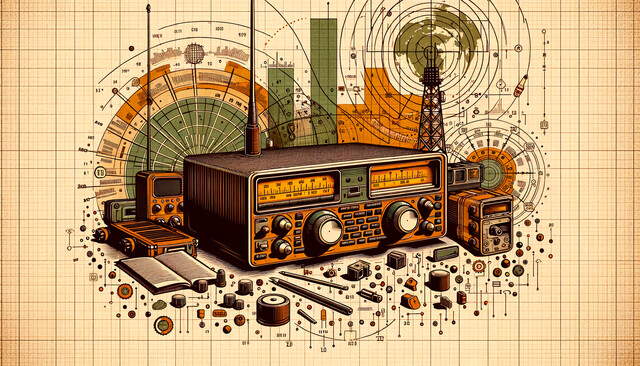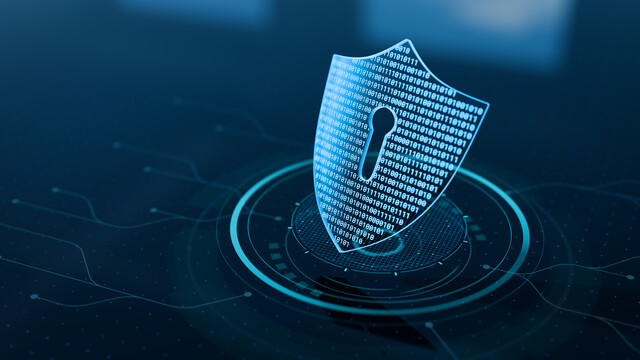Lesson 1. Connect and Communicate: Ham Radio Essentials
Explore the vibrant tapestry of ham radio--a realm where hobbyist passion meets professional necessity, binding operators in an intricate network of communication that transcends geographical boundaries. This course unravels the mysteries of ham radio, guiding learners in everything from legal logistics to the technical nuances of propagation.
Lesson 2. Radio Spectrum: Unveiling the Bands and Frequencies
Radio waves, a part of the electromagnetic spectrum like visible light, enable the transmission of signals at the speed of light through electric and magnetic fields. Transceivers combine transmitters and receivers to allow two-way communication, using antennas like dipole and beam designs to connect with different frequencies.
Lesson 3. Building Connections: Navigating Ham Radio Organizations for Beginners
International conventions and local hamfests present excellent opportunities for enthusiasts to discover the latest trends, interact with peers, and immerse themselves in diverse aspects of the amateur radio hobby. By engaging with clubs and online forums, newcomers and veterans alike can broaden their expertise and enjoy a thriving amateur radio community.
Lesson 4. Ham Radio Licenses: A Beginner's Guide
The FCC recognizes the passion and skills of ham operators, regulating the radio spectrum to facilitate global amateur communication. Licenses are crucial as they delineate frequencies and ensure qualified operators contribute effectively during crises.
Lesson 5. Navigating the Path to Your Ham Radio License
The FCC requires aspiring radio amateurs to pass a multiple-choice exam to receive their license and call sign. Beyond studying the question pool, understanding underlying radio operation concepts is crucial for success as a radio operator.
Lesson 6. Frequency Fundamentals: Understanding Bands and Sub Bands
Mastering your radio and its settings is key to connecting with other ham operators, requiring an understanding of different bands, frequencies, and equipment. By exploring tuning techniques and transmission types, you lay the foundation for seamless communication.
Lesson 7. Step into the Airwaves: Mastering Your Initial Call
Initiating a Morse Code call mirrors voice calls except for using 'DE' for 'from,' and it ends with 'K' to signify the end of the transmission. The lesson emphasizes learning these abbreviations and understanding shorthand responses such as 'TKS' for thanks.
Lesson 8. Operate with Ease: Casual Ham Radio Connections
Discover the art of ham radio as a hobby, where casual operators connect globally, even in remote areas, using various setups from home to portable radios on the move. Adhering to simple regulations ensures an enjoyable experience, with the FCC Rule Book providing essential guidelines and tips.
Lesson 9. Mastering the Art of Ham Radio Conversation: Etiquette and Guidelines
In ham radio, balanced on-air conduct requires discerning which bands suit casual chats and respecting organized group activities. By tuning into the social nuances of radio communication, operators enhance both personal interactions and the hobby's community atmosphere.
Lesson 10. Emergency Response 101
Amateur radio hams play a crucial role in emergency communication by volunteering with groups like ARES and RACES, backed by training and support from the ARRL. Their preparedness and ability to handle traffic communication make them indispensable for emergency response and public service.
Lesson 11. Ham Radio's Specialties: Exploring DX and QRP
Many amateur radio operators advance into skill areas like DX-ing, calling for detailed knowledge of signal propagation based on atmospheric conditions, and aiming for distant contacts that may earn awards. QRP-ing involves deliberate low-power communication challenges, often requiring custom equipment build, and presents its own achievement records within the community.
Lesson 12. Digital Waves and Satellite Signals
Rising from traditional voice and Morse code transmissions, digital ham radio has leveraged computer technologies to send data using Internet protocols despite ionospheric challenges. Participants engage in contests and awards while experimenting with modes like radioteletype and PACTOR that offer reliable, albeit sometimes slow, communication with error correction.
Lesson 13. Choosing Your First Radio: A Beginner's Key to Entry
Ham radio's diversity demands strategic planning in equipment selection, considering where and how radios will be used and setting clear operational goals. By understanding the significance of filters, digital capabilities, and personalized accessory needs, enthusiasts can enhance their radio communication experiences.
Lesson 14. Computers in Ham Radio: Beyond Logs and Record-Keeping
A successful ham radio setup relies on choosing appropriate antennas and computers which aid in digital communication and system control. From wire and vertical to beam antennas, each serves a distinct purpose and requires specific support and maintenance.
Lesson 15. Designing the Ideal Ham Shack: A Comprehensive Guide for Comfort and Efficiency
Maintaining a ham shack involves keeping a comprehensive notebook detailing equipment schematics, maintenance records, and a contact log for troubleshooting and performance tracking. A well-stocked toolbox aids in basic repairs and ensures equipment remains in optimal working condition.

13 Hours average completion time
1.3 CEUs
15 Lessons
31 Exams & Assignments
16 Reference Files
Mobile Friendly
Last Updated November 2025





